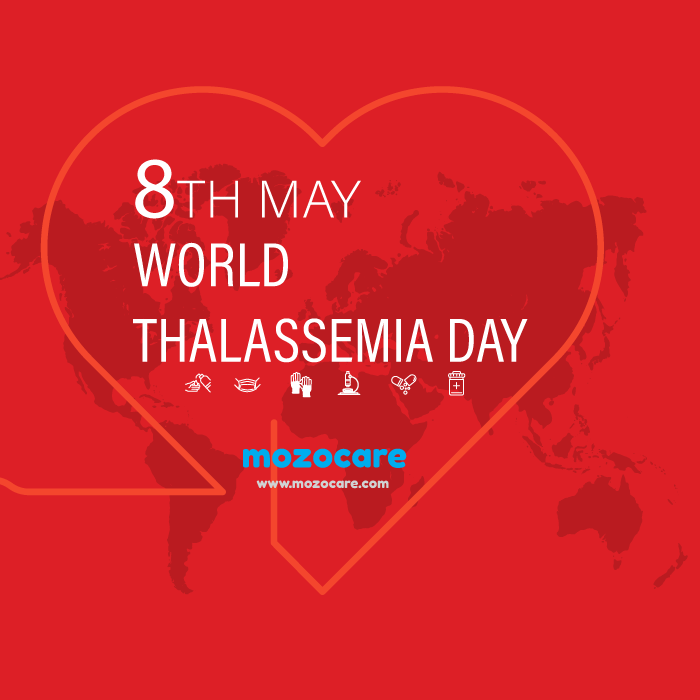
World Thalassemia Day is observed on May 8 every year, to mark attention towards Thalassemia- a blood disorder. Thalassemia is an inherited hemoglobin disorders (sickle-cell disorders and thalassemia) were originally characteristic of the tropics and subtropics but are now common worldwide due to migration
Thalassemia affects approximately 4.4 of every 10,000 live births throughout the world and In India, every year over 10,000 children are diagnosed with Thalassemia.
Haemoglobin comprises four globin chains: fetal haemoglobin (Hb F) has two α and two gamma chains (α2γ2) and adult haemoglobin (Hb A) has two α and two β chains (α2β2). Genes in the α-globin and β-globin gene clusters (on chromosomes 16 and 11) control globin-chain production. Due to spontaneous mutation, haemoglobin gene variants are present at low prevalence (carriers 1–1.5/1000) in all sizeable populations. They fall into two broad groups – structural variants that change the amino acid sequence and produce an unusual haemoglobin, and thalassaemias that lower or abolish production of globin chains. Most haemoglobin gene variants are rare and many are harmless, but some are common because carriers are less likely than others to die from falciparum malaria. The most common such variant, α plus (α+) thalassaemia, is usually harmless. However, people who inherit combinations of haemoglobins S, C, E, D Punjab, β thalassaemia, or α zero (α0) thalassaemia may have a serious haemoglobin disorder. In populations in which malaria is (or was) endemic, 3 to 40% of individuals carry one of these significant variants, and the prevalence of haemoglobin disorders ranges from 0.3 to 25 per 1000 live births.
Carriers are easily detected by routine haematological methods and can be forewarned of their reproductive risk. Carriers of structural variants have 30–50% of the variant haemoglobin in their red cells: thalassaemia carriers have small red blood cells and sometimes mild anaemia, and β thalassaemia carriers also have over 3.5% of Hb A2. The resemblance between thalassaemia and iron deficiency can confuse the diagnosis of either disorder.
β thalassaemia major causes profound anaemia that kills untreated affected children before the age of 3 years. However, the life expectancy of patients treated with regular blood transfusion and iron-chelation therapy, or bone-marrow transplantation, is approaching normal. α thalassaemia major causes hydrops fetalis and perinatal death, often with life-threatening obstetric complications for the mother, and prenatal diagnosis usually leads to termination of pregnancy. Some cases have recently been saved by intrauterine transfusion, despite a high risk of severe mental and physical handicap.
In sickle-cell disorders, sickled red blood cells block small blood vessels and cause anemia, functional asplenia, episodes of severe pain, and residual organ damage. Most untreated affected children die from infection in early life, but simple steps including neonatal diagnosis, prophylactic antimalarials and antibiotics, access to hospital treatment when needed, and information and support for families greatly improve quality and length of life.
A policy of detecting carriers and informing them of their risk, and possibilities for reducing it, usually leads to a fall in births and deaths of affected children. Requirements are the same for thalassemia and sickle-cell disorders. In most countries, the approach develops in three stages. The effects of screening depend on the choices made by informed individuals. Birth prevalence of thalassemia can fall by over 90%because most at-risk couples limit their family to two healthy children, there is very high uptake of prenatal diagnosis, and some carriers avoid risk by selecting a non-carrier partner. Available data for sickle-cell disorders shows lower use of prenatal diagnosis and improved survival of affected children with neonatal diagnosis.
Learn About Bone Marrow Transplant
Find Hospitals for Bone Marrow Transplant
Source: World Health Organization